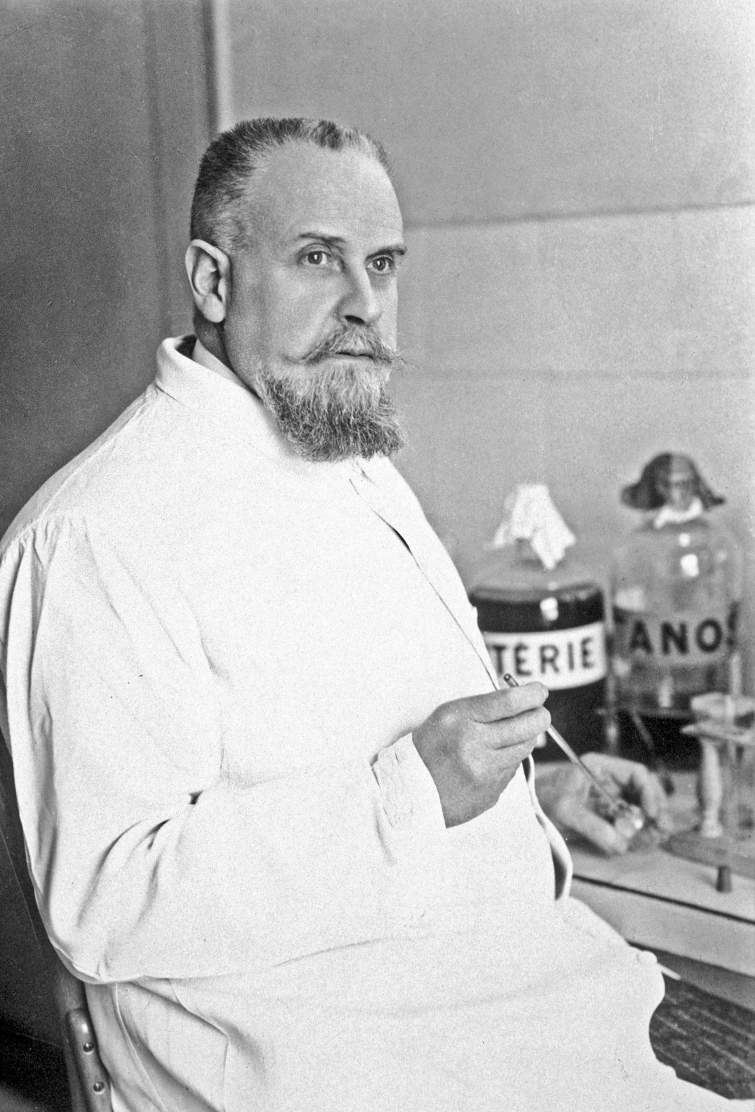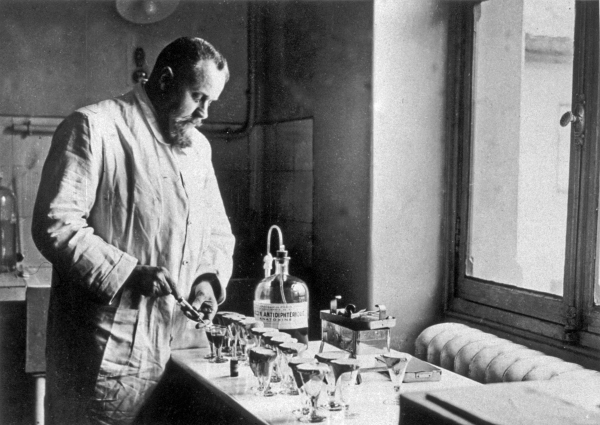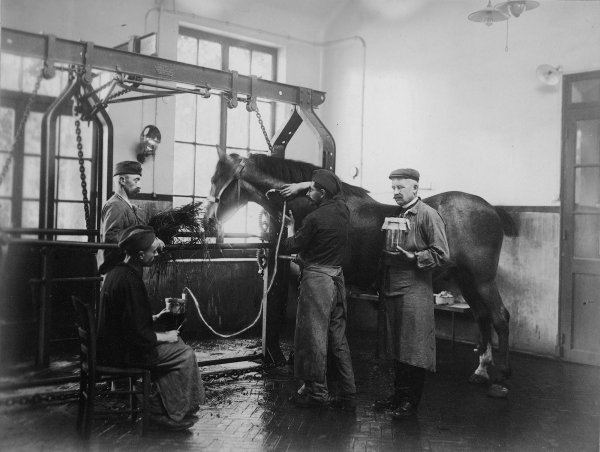
 Museum
Museum
A hundred years ago, Gaston Ramon demonstrated the principle of immunological adjuvants or immunomodulators
A hundred years on, the newsletter team is inviting you to take a closer look at the scientific achievements of Gaston Ramon (1886-1963). Gaston Ramon, a veterinarian by training, revolutionized preventive medicine with key discoveries, the impact of which is still being felt today.

Gaston Ramon: A veterinarian who played a key part in the immunological revolution
Gaston Ramon, a baker's son born on September 30, 1886 in Bellechaume in the Yonne département, became interested in science at an early age. After attending secondary school in Sens, he joined the Alfort National Veterinary School (EnvA) in 1906, where he developed a keen interest in laboratory work, especially in the field of chemistry and contagious diseases. It was there he learned that formalin could be used to preserve milk, a simple lesson that would be decisive for his future research.
In 1911, Gaston Ramon joined the Institut Pasteur, assigned by Émile Roux to the Serum Production Department at the annex in Garches. Although he initially played a purely technical role – immunizing horses and collecting antiserums for tetanus, diphtheria and gangrene –, he made many key observations during this period, sowing the seeds for his future discoveries. He stepped up his work during the First World War, producing a huge volume of serums, especially against tetanus, which proved to be extremely effective and considerably reduced morbidity from tetanus in Allied soldiers.

It was in 1920, after obtaining a laboratory in Garches, that Gaston Ramon, working alone and tirelessly, began his experiments. In less than four years, he made four fundamental discoveries:
• The flocculation reaction (1922): By adding antitoxin to a constant amount of diphtheria toxin, Ramon observed the formation of a whitish precipitate, known as “initial flocculation.” This discovery made it possible to measure the amount of antitoxin in vitro, making tests much faster, more accurate, and more economical than in vivo methods using animal models, which were slow and costly. The exact correlation of the results with Ehrlich's method made it a universal tool.
• The principle of toxoids (1923): Based on his observations on formaldehyde, Ramon had the idea of adding this substance to diphtheria toxin and heating it. This resulted in a toxin that was completely harmless (non-toxic) but retained its immunizing power intact. He named this new substance “anatoxin,” a term proposed by Dr. Roux. Anatoxins represented a major advance over Louis Pasteur's live attenuated vaccines, offering perfect stability, safety, and consistency, while also being soluble and measurable. Ramon applied this principle to develop the diphtheria vaccine (1923) and the tetanus vaccine (1924).
o The diphtheria vaccine had a huge impact: in France, the number of deaths from diphtheria fell from 3,000 in 1924 to almost none by the end of the 1960s. The disease, once the “terror of mothers,” became virtually absent in countries where vaccination is mandatory.
o The tetanus vaccine, introduced in the French army in 1930, also showed spectacular results. During World War II, the rate of tetanus among vaccinated Allied soldiers was much lower than among unvaccinated soldiers.
• The principle of adjuvant and immune-stimulating substances (1925): Ramon observed that the presence of inflammatory reactions (abscesses) at the antigen injection site in serum-producing horses correlated with higher antitoxin production. He deduced that adding an inert, irritating substance, such as tapioca, could improve the immune response. Adjuvants increase the production of antitoxins (for example, doubling that of diphtheria antitoxin and increasing it fivefold for tetanus antitoxin) by prolonging the presence of the antigen and stimulating the local immune response. Today, almost all vaccines use adjuvants, often based on aluminum salts, an idea originally proposed by Ramon.
• Combined vaccinations (1926): Contrary to the theory of “antigen competition,” Ramon demonstrated that combining several vaccines not only does not exhaust the immune system, but can stimulate it further, increasing the antigenic response. This method, which forms the basis of the diphtheria-tetanus vaccine and then modern triple or hexavalent vaccines, offers considerable technical, financial, and immunological advantages, allowing several immunizations to be given in a single injection.
After these major discoveries in the 1920s, Gaston Ramon continued his career at the Pasteur Institute as director of the Garches Annex in 1926 and deputy director of the Pasteur Institute in 1934, succeeding Albert Calmette. Between 1937 and 1940, he coordinated all serum and toxoid production services, a strategic role during mobilization, with the Institute supplying seven million doses to the armed forces.
In May 1940, his scientific and administrative skills were recognized with his appointment as director of the Pasteur Institute. His tenure, which lasted until December 1940, was marked by proposals for financial and administrative reforms that were not approved by the Board of Directors, leading to his resignation. Nevertheless, he continued his involvement with the Institute as honorary director and head of the Immunology Services Group.
In 1944, in the context of the Liberation, the Board of Directors of the Pasteur Institute reviewed the activities of certain officials during the Occupation. Ramon then relinquished his position as director in Garches. However, he continued his research activities at the Institute. In 1947, he left the Pasteur Institute for good, continuing his commitment to health.
A pioneer of “One Health”[1]
In 1949, he was unanimously elected Director of the International Office of Epizootics (OIE), where he worked to combat animal diseases at the European level (foot-and-mouth disease, bovine tuberculosis, rabies, myxomatosis). His actions, such as the establishment of surveillance systems and the promotion of international cooperation, anticipated the modern concept of “One Health,” which recognizes the interdependence between human, animal, and environmental health. Ramon, a veterinarian, already embodied this multidisciplinary approach, emphasizing the crucial role of veterinarians in public health.
The Gaston Ramon collection at the Pasteur Institute Archives
The Gaston Ramon collection held at the Pasteur Institute Archives consists of the working files that the scientist took home with him when he left the Pasteur Institute. After his death in 1963, these archives were preserved by his family in the Yonne department. In 1975, his son Jean Ramon donated them to the Pasteur Institute with the aim of contributing to the creation of the Museum of Pasteurian Research Applications in Marnes-la-Coquette (Garches Annex), where Gaston Ramon had worked for many years. Initially deposited at the Pasteur Museum, these archives were transferred to the archives department in 1994 (link to the collection description). Today, the archives department is in contact with Jean-François Ramon, the researcher's grandson, who wishes to add to this heritage with a new donation of archives.
Find works on Gaston Ramon in the CeRis library
[1] Mikaël Barrio, Gaston Ramon (1886-1963), veterinarian and immunologist of yesterday and tomorrow: the secrets of knowledge transfer, Thesis defended in May 2021